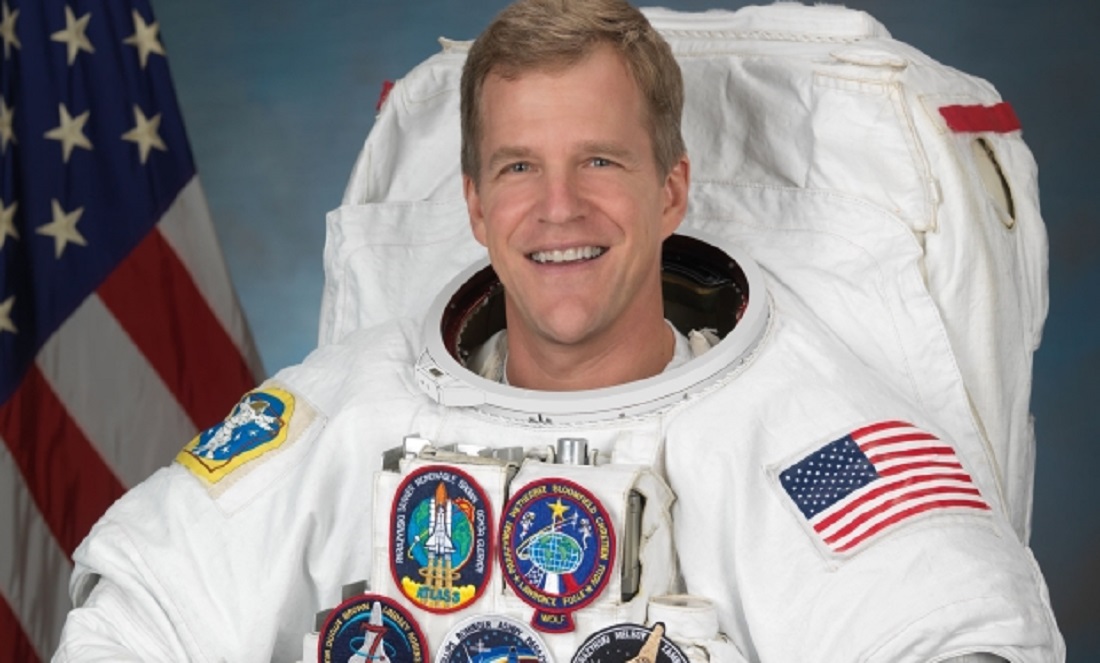If you were to write up a no-holds-barred bucket list of massively ambitious goals to achieve in one lifetime, you might end up with something that looks a lot like Dr Scott Parazynski’s resume.
“I just don’t like to watch TV,” he tells Particle, from a sunny Texas café. “I like to keep moving.”
After travelling 23 million miles in orbit across more than eight weeks – including seven space walks – Scott says he’d blast back into space in a heartbeat.
“It’s the best job in the universe. Of course, I would. Absolutely.”
But for now, he’s coming to Perth.
Pressing the boundaries
Whether it’s hurtling through space, scuba diving into the belly of a volcanic lake, or climbing to the top of the world, Scott has had to innovate to stay alive.
“I find that challenging environments are an incredible catalyst for innovation,” Scott says.
“You have to think out of the box to survive and thrive…you often have to invent new ways of doing business, of supporting whatever it is that you’re doing…you need to develop new capabilities, which benefit all of us.”
Technology, science and human endurance
Scott puts his experiences and creativity to use as Chief Explorer at Blue Marble Exploration—an outfit that undertakes extreme expeditions to “push the limits of technology, science, and human endurance to raise awareness of Planet Earth”—and as Managing Director of Apogee Interests, which commercialises Scott’s many inventions, including medical devices and equipment for extreme environments.
“Life is an adventure, and there’s so many different opportunities to explore, but also to create, and that’s what I really love, the inventive process,” he says.
“I love being an entrepreneur and trying to create things that people really need and will use.”
Scott’s latest venture is Fluidity Technologies, a company that specialises in highly precise robotic movement.
“Anything that moves through space, whether it’s a drone or helicopter or surgical robot, or if you’re in an augmented reality, or gaming, we can move with great precision,” he explains.
Risk, failure and innovation
If you’re burning up with your own idea for changing the world, what can you do to make your dreams a success?
Scott says taking measured risks is a good start.
“Having a passion, a vision for where you want to go, and studying the risks along the way is important,” he says. “You can’t be completely terrified of failure. You have to be willing to take some risks, some intelligent risks, to achieve great rewards.”
“Try to understand where the pitfalls might lie, and have some options, a plan B and a plan C if things don’t go exactly along the trajectory that you predetermined.”
“Most things in life aren’t a linear path, there are all sorts of twists and turns.”
Pure science vs applied research?
From artificial limbs to X-rays, much of the knowledge and technology we take for granted was developed to progress our missions into space. So how can we balance humanity’s big sky dreams with goals that are literally more down-to-earth?
By pursuing both, says Scott.
“It’s important to have lofty, audacious goals, like deep space exploration,” he says.
“Then you never know exactly what you’re going to create, you never know exactly what those pay-offs to society in terms of new technologies and new discoveries are going to be, but you can bet, based on history, that they’ll be extraordinary and revolutionary.
“If you’re looking to develop the next best mousetrap, you’ll experience evolutionary, more modest gains, but you’ll solve problems that people care about,” he says.
Attention: Astronaut Hopefuls
If being an astronaut is on your bucket list, the good news is the world is hiring.
Astronaut hopefuls will find growing opportunities as companies like SpaceX, Blue Origin and Virgin Galactic shoot for the stars.
“They’re going to open up space for hundreds of thousands of people around the world, independent of nationality,” says Scott.
“I think it’s a really exciting time for young people who are really motivated to pursue maths and science and engineering and technology, because companies like those will be taking the brightest,” says Scott.
“There’ll be flight opportunities to conduct experiments, to develop hardware for these environments, and then maybe to go live and work on an orbiting space station, or go to the moon, or maybe stand the first footprint down on Mars.”
All this sounds like a whole lot of fun, but isn’t it incredibly stressful?
“If you’re going to conduct experiments and work a mission, it can be focused and perhaps stressful, but it’s always fun,” Scott grins.
“And then of course, in the future, there’ll be opportunities to go to space just to have fun.”
“Virgin Galactic will be taking people to go and enjoy, and I can’t think of a more joyful place to be than to be looking down on your home planet from that vantage point.”
Dr Parazynski in Perth
Scott came to WA for the 26th World Wide Web conference and included a visit to Scitech as part of his trip.
“I’m so excited to come to Perth. I’ve seen it from space, but I’d love to see it from ground level,” Scott says.









